Week starting 27th October – Halloween, Leaves, Trusses and more flag stuff
Halloween fell this week. But on Thursday evening the weather wasn’t that friendly, and even though we had made preparations with supplies of candy, we had no terrifying visitors at Choctaw Ridge. However, we did meet some of our to-be neighbours last Saturday at a Halloween party on Porter Springs Road at the Lydia School.
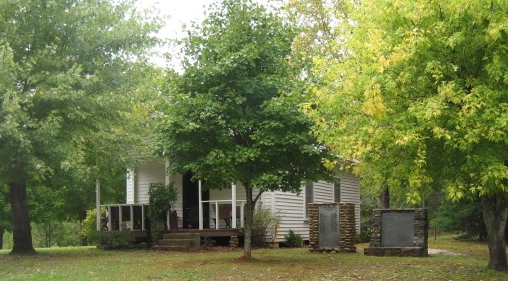
This little old schoolhouse is about half a mile down the road from our building site – there was a school there for more than a hundred years until it closed in the 1950s. Local residents had got together, as they do there a couple of times a year, to arrange a function. About forty people of all ages there (quite a few related to each other). We were warmly welcomed – everyone knew that there was building going on down the road and wondered what we were up to. The other main topic of conversation (apart from discussions on the high quality of the boiled peanuts) was a proposal to create a drug and alcohol rehabilitation centre nearby, something which created a universal sense of foreboding. I can see Lisa taking an increasing interest in the local planning procedures – just like Ealing!
The weather certainly swung about a lot this week. There were below freezing temperatures one night. The days remained warm, though – no need for a jacket in the afternoon. Apparently this is typical of North Georgia – temperatures swing about a lot as winter approaches. I assume that this has had an effect of the autumnal leaf display – friends say that this year is turning out less spectacular than usual. However, there is plenty of colour about, as shown by these photos of teatime on the back deck at Choctaw Ridge and trees by the building site. But it won’t last, as the last two days have been quite windy and fallen leaves abound.
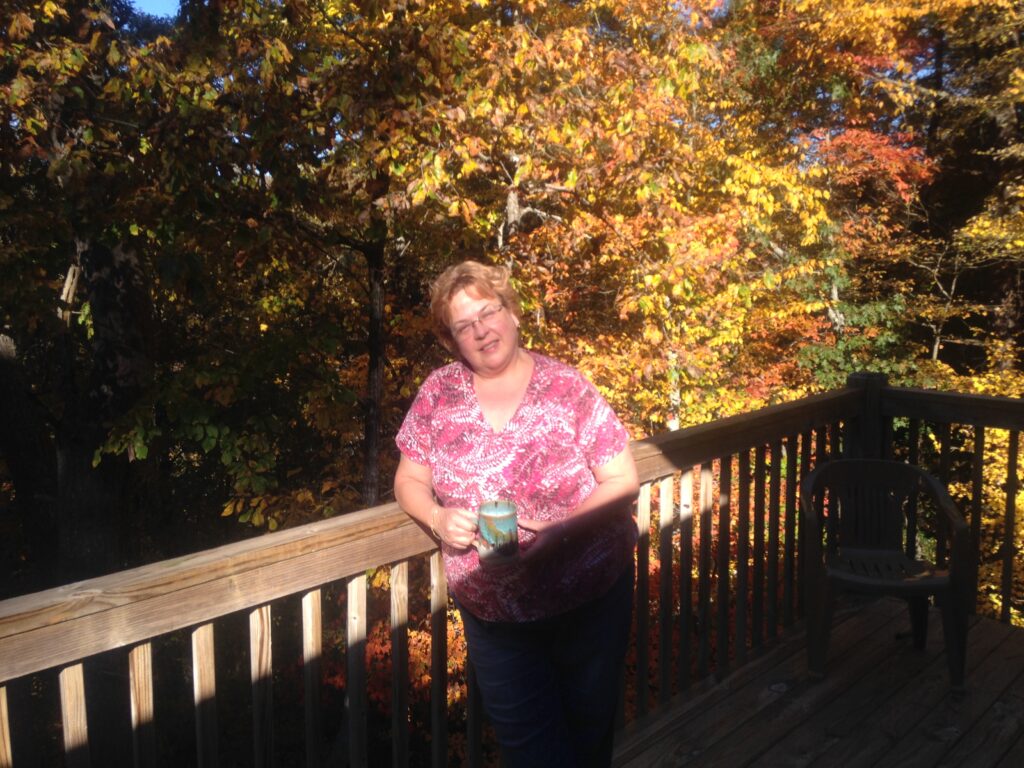
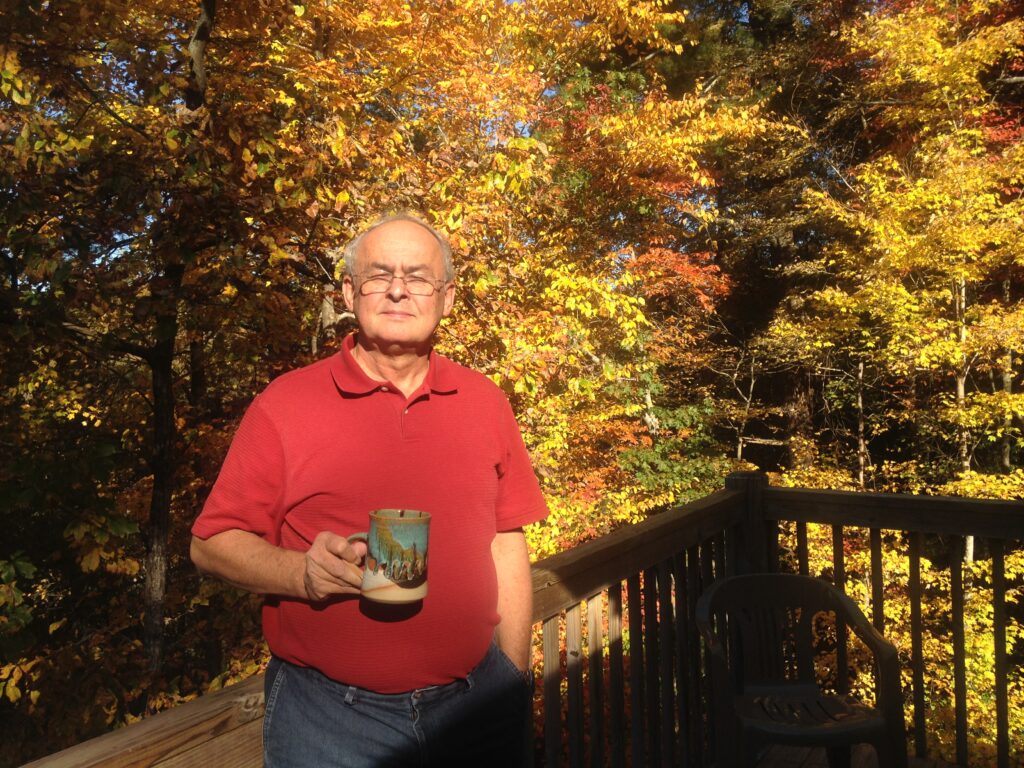
We saw some even more brilliant chrome yellow leaves when we took a day trip up to South Carolina on Wednesday. It was only an hour or so by car.
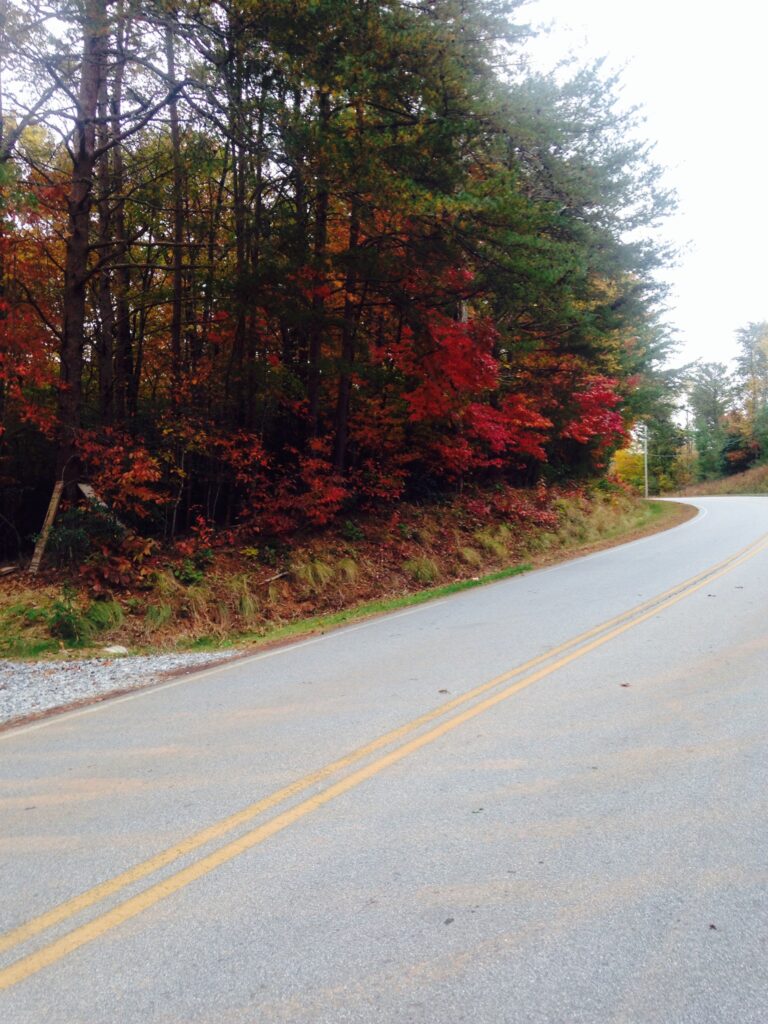
Crossing a state line is a fairly unremarkable thing in USA, much less than in, say, Europe. In theory, there are national laws preventing hindrance to free trade between states, but in practice there are lots of state laws which restrict purchase of specific items. In Georgia you cannot buy fireworks (unlike guns, which are freely available with minimal control or checks at a “Gun Fair”). South Carolina used to (maybe still does) prohibit spirits in anything other than miniature bottles. So as we approached South Carolina there were frequent billboards advertising warehouse stores selling fireworks just down the road. On the way back, the only things that Georgia seemed to have on offer was land for sale. What we were going to buy in South Carolina was huge wooden beams, carefully shaped into the structural fabric of the new house (called trusses – nothing to do with support for corpulent gentlemen). We needed both exterior woodwork and also some fairly complex interlocking beams which are a major decorative feature of the Great Room (a rather superior title for the sitting room). The architect was very keen on Accent Trusses, who have provided the beams for many of his houses. And after meeting Jim and Erin, we were convinced. Not only in their capability to create decorative trusses, but also a reasonable price for a lot of very heavy timber and room for our over-tight timescales in their production calendar.
Back on the building site, the concrete walls have been waterproofed. And then, in a reversal of all the land carving that had been going on, Kim and Tony have returned with their grading equipment to start filling up the empty spaces, putting the soil back into the building. So, now I understand how this phase of American building works. Unlike England, where a trench is dug and the foundations fill the trench, here the site is cleared to an impressive depth, walls are created between removable shutters, and then the walls are buried again and used as foundations. Once the soil is back in situ, the main plumbing and other services are laid and then the basement level floor is created over them with another round of poured concrete. Which is what the next few weeks will be all about.

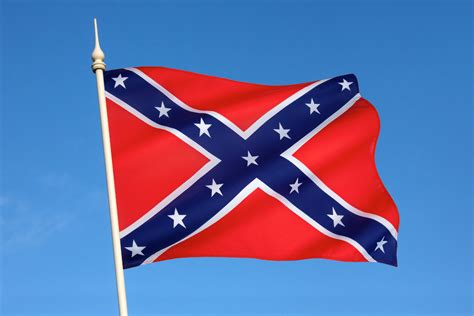
Finally, Another snippet of Americana: The “Confederate Flag” much beloved of motorcyclists and Southern patriots
This rectangular flag was never really the official flag of the Confederate States. A square banner with a similar design was used as a battle flag (to avoid any confusion with the Union States flag). In the first half of 20th Century, the rectangular design became increasingly popular, symbolising Southern resurgence and denial of defeat. In World War II, it was even adopted for a time by army units with a strong Southern presence, but that was not approved of by the US Army. The flag really took off as a Southern symbol in the 1950s, considered by many to be a protest against school desegregation. Not surprisingly, it became very contentious as the civil rights movement gained strength, being seen as a symbol of the slave-owning Southern states. In South Carolina especially it was political hot potato, with the flag flown over the Senate building from 1961 to 2000.
The Confederate States had a variety of national flags during the Civil War. The first versions had red and white horizontal stripes with a blue panel displaying a circle of stars (the number of stars changed as more states joined the Confederacy). This was the real “stars and bars” (not the Confederate Flag).

With the addition of the state seal in the middle of the circle, this design is in use today as the state flag of Georgia.
Like several other states, Georgia used to have a design incorporating the Confederate Battle banner – this was only abolished in 2001 and replaced by the current design two years later. There are still plenty of the old Georgia flag about! The only state flag which still includes the Confederate Battle banner is Mississippi, but several other states still have vestiges of the Confederacy in their flags.
